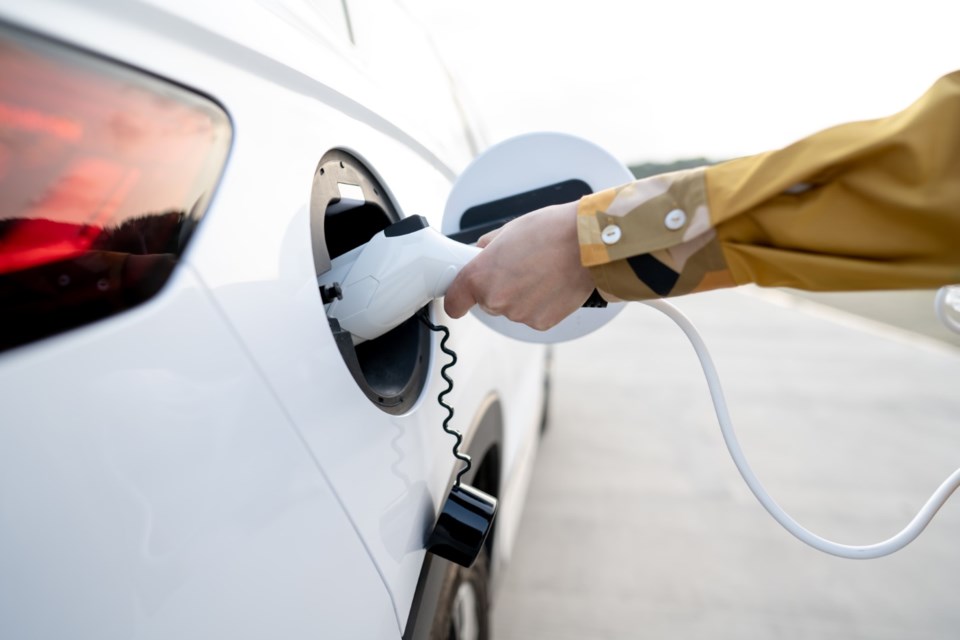WESTERN PRODUCER — The product that sparked the first big global grain rally of the 21st century is under attack in the United States, according to an industry official.
Various U.S. federal government regulations are promoting electric vehicles and other low-carbon options at the expense of ethanol, according to Geoff Cooper, president of the Renewable Fuels Association (RFA), the leading trade association for the U.S. ethanol industry.
A prime example is the U.S. Environmental Protection Agency’s proposed multi-pollutant emissions standards for model years 2027-32 light-duty and medium-duty vehicles.
The proposed regulation treats electric vehicles as “zero emissions” vehicles, ignoring upstream emissions related to electricity production and the mining and processing of critical battery minerals.
That gives auto manufacturers a compelling incentive to produce electric vehicles because it lowers the overall greenhouse gas emissions ratings for their entire fleet of vehicles.
The EPA anticipates that its tailpipe emissions standard could result in electric vehicles accounting for 67 percent of new light-duty vehicle sales and 46 percent of new medium-duty vehicle sales by 2032.
“That, to us, is crazy,” Cooper said during an Agri-Pulse Open Mic podcast.
Even if automakers could ramp up electric vehicle production to that extent, there wouldn’t be the infrastructure to support it.
It would require an extra 30 to 50 percent in U.S. electricity generation, 60 percent of which is created by using coal and natural gas.
“People don’t seem to get it,” said Cooper.
“When you’re looking at a battery electric vehicle, yes, it may not have a tailpipe, but the tailpipe for that vehicle is the stack at the power plant.”
There would also have to be new transmission lines and a massive expansion of the charging station network, he said.
However, perhaps the most worrisome thing is that the batteries for electric vehicles will be made with rare minerals that are intensively mined in places such as China, Bolivia and the Congo.
“If we keep rushing down this road to electrification, we’re going to be putting our country right back in a situation where we’re dependent on adversarial countries for key materials and energy supplies,” said Cooper.
None of those upstream emissions were factored into the EPA’s “zero emissions” rating for electric vehicles.
Cooper said the upshot is that the proposed rule discriminates against other low-carbon solutions such as ethanol.
“Boy, what they proposed is nowhere close to a level playing field,” he told Agri-Pulse.
Unless the EPA changes something in its final rule it will likely be facing litigation from the biofuel sector because it feels the EPA is “grossly exceeding” its authority.
“Congress did not give EPA the authority to phase out internal combustion engines,” he said.
The RFA also takes issue with a new sustainable aviation fuel (SAF) tax credit unveiled under last year’s Inflation Reduction Act (IRA) legislation.
The U.S. government has established a target of three billion gallons of SAF production by 2030.
To achieve that goal, President Joe Biden’s administration included a tax credit in the IRA amounting to US$1.25 to $1.75 per gallon for SAF that reduces greenhouse gas emissions by at least 50 percent compared to conventional jet fuel.
SAF that is made using corn ethanol does not meet that threshold under the International Civil Aviation Organization’s lifecycle model, which is the model being used in legislation related to the tax credit.
The RFA believes the government should instead be using the U.S. Department of Energy’s GREET model, which deems that SAF made with corn ethanol would qualify for the threshold.
“There are some in Washington that are trying to obfuscate and confuse the issue and use other models and other methodologies to suggest corn ethanol isn’t as good as the Department of Energy says it is,” said Cooper.
There are also regulations in Washington blocking gas stations from selling E15 blends in the summer.
Cooper said the U.S. used to be the world leader in ethanol, but other countries are now leaving it in their dust.
Half of the liquid fuel consumption in Brazil is biofuel, and most of that is ethanol. The minimum amount blended in that country is 27 percent.
India has moved to a 10 percent nationwide blend and intends to go to a 20 percent blend soon.
“Whereas we’re all focused on electric vehicles here in the U.S., we’ve got other countries that are looking at biofuels as the solution,” he said.



